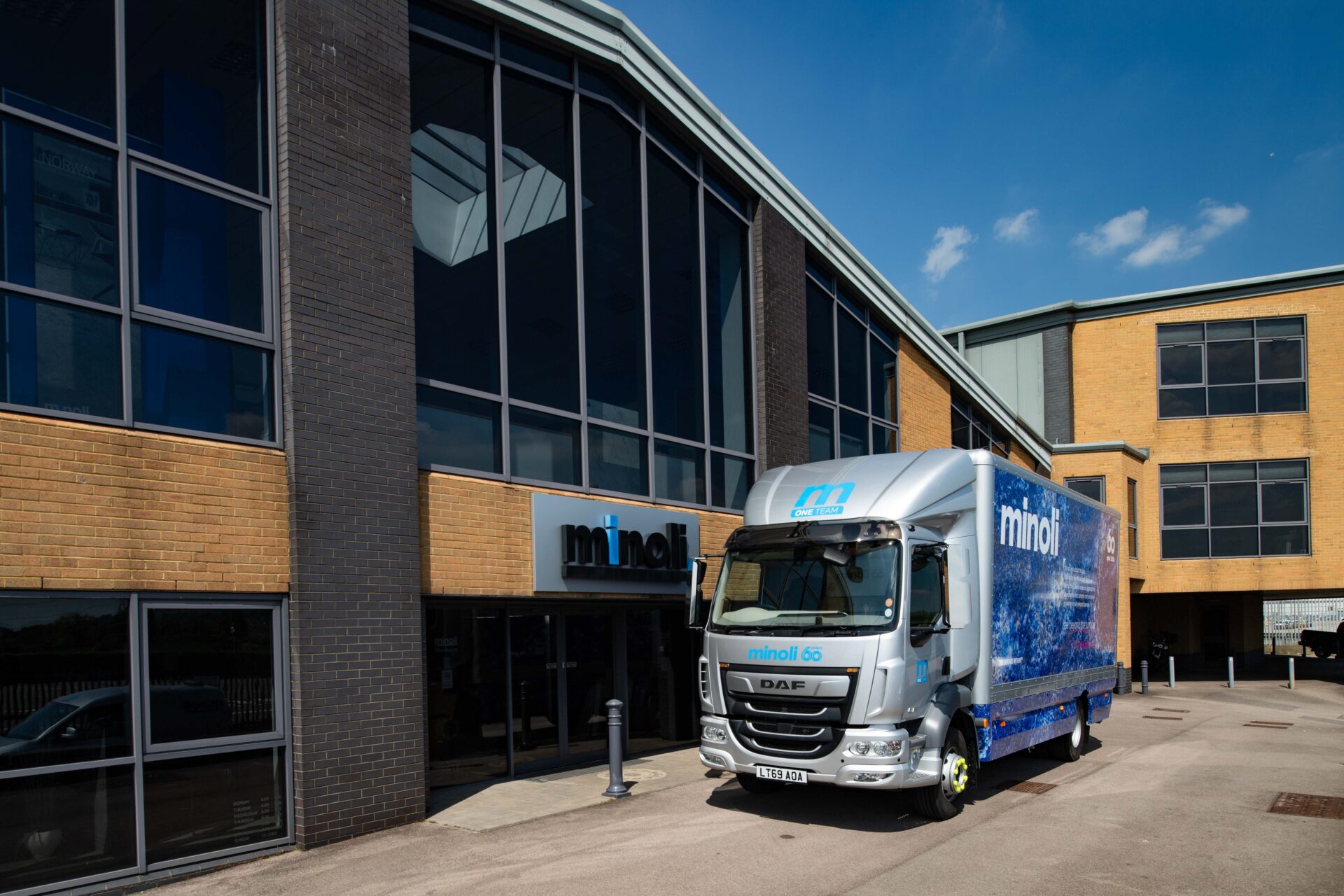Posted in Minoli
21st March 2022
Part 02: Minoli Oxford, Transport Way
Many of our professional clients and private customers will have visited our Oxford Headquarters in Cowley. In its present form, now straddling both sides of Transport Way, the ‘Minoli Village’ has quite an impressive presence as you approach, but since it first started trading in the late 1930s, the company has come a long way.
The firm was originally founded by Luigi Minoli, working with Marble and Terrazzo in Islington, London where the Minoli family was then based. Moving to Oxford just after the war in the 1940s, the business was first located close to the city centre in Divinity Road, where Luigi set up a Terrazzo factory. Amongst the row of terraced houses, he chose a property that’s garden extended through to the adjacent road where he set up the business, so an easy commute from home at one end of the plot, to work at the other.
If you’re ever passing through the St Clements area of Oxford, you may well spot Divinity Road. On the corner with Hill Top Road stands a post box that’s very distinctive for two reasons. Firstly, it is painted gold to celebrate the Olympic medal of resident 2012 Paralympic rower Lily van den Broecke. Secondly, the post box is an example of a short-lived square design introduced in 1968 called the F-Type. Designed and developed by David Mellor, most famous for designing the modern traffic light, only 204 of these post boxes were ever made. The design saw a change from cast iron to sheet steel and unfortunately most have now corroded, nicknamed by the Posties as the ‘rotten bottom boxes’.

Luigi and his son Peter took advantage of Government incentives to move to the current location on Transport Way in Cowley in the 1960’s, where the company was first formally incorporated. On today’s site at that time stood the Minoli factory producing terrazzo tiles and the operational base for the company’s installation division which thrived working on colleges, car showrooms, hospitals and domestic projects.
Prior to that, the area where Transport Way now stands was home to a munitions factory during the war. This was likely connected to the sizeable Morris Car production facility that was sub-contracted by De Havilland to produce Tiger Moth airplanes. In those days, the area also had its own passenger train station called Morris Cowley. The line remains open to this day for the purposes of serving the BMW Mini plant, although the possibility of reinstating passenger services has also been explored.


Recognising the emergence of Italian ceramic and porcelain tile manufacturing, Peter worked to develop a business wholesaling to local merchants, which soon took over completely from terrazzo production. Using contacts in Europe, predominately Italy, Peter built up a strong supply network from the newly emerging tile manufacturing companies, and many of the world’s leading tile manufacturers can trace Minoli to being virtually their first export client. Some of these relationships remain in place to this day.
By the time Peter’s son, Jonathon was born in 1968 (Minoli’s current MD), the company was very nearly 100% tile, with a fast-growing network of clients including tile studios, kitchen and bathroom showrooms, house builders & developers and car dealerships, who had switched from Terrazzo to using tiles for their showrooms and workshops. Minoli had now built a second building on the Transport Way site and continued to expand its staff and fleet of delivery trucks.


During the 1990’s and trough to this day, Minoli has continued to expand, but very much organically with the completion of the new warehouse and showroom facility in the Autumn of 1996 and then a further, much larger development in 2002 and 2003, creating far more storage, marketing and administration space. In line with the company’s evolving client base, this also involved the development of a state-of-the-art product presentation and hospitality area for corporate housebuilder, developer and professional customers.
In its current state, Minoli’s impressive, purpose-built Oxford headquarters and distribution centre comprises some 32,000 ft2 of warehousing and 7,000 ft2 of showroom space.
We’ve enjoyed looking back at the history of our premises and the surrounding areas. Next week we’ll conclude exploring the ancillary buildings we’ve most recently acquired to further expand the headquarters site.
Image Credits 3rd Parties:
- Lily van den Broecke and gold post box – Greg Blatchford, Oxford Mail
- Morris Cowley Munitions Factory – Museum of Oxford
- Morris Cowley railway station – Oxford Mail